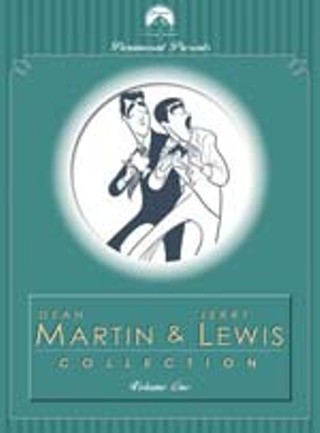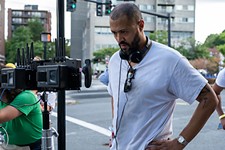The Martin & Lewis Collection: Volume One
"We don't need writers"
Reviewed by Steve Uhler, Fri., Feb. 9, 2007

THE MARTIN & LEWIS COLLECTION: VOLUME ONE
Paramount Home Video, $49.99
"We don't need writers," crowed Jerry Lewis and Dean Martin once or twice to the press, which was true enough for television in the Fifties. Movies were another story. Onstage and on television, they were free to improvise, feeding off the energy of live audiences, who actively fed the duo's comic timing. But Paramount Studios and producer Hal Wallis wanted something a little more orderly for their money when they signed the red-hot team to a long-term contract in 1949 – hence the compromised canon of Martin and Lewis' celluloid legacy.Unlike their predecessors Laurel and Hardy, the Marx Brothers, and even Abbott and Costello, Martin and Lewis weren't made for the movies. The camaraderie so evident in their stage and TV appearances dissipated on the big screen into contrived Holly-wood fluff, all tinsel and no tree. Finding vehicles suitable for their "lightning in a bottle" talents proved problematic. Traditional Hollywood storylines cramped the team's style, and more often than not, they found themselves playing into a void.
Both Jumping Jacks and Sailor Beware (keep an eye out for a glimpse of James Dean in the climactic boxing sequence) found the duo tramping through the tired Hollywood trenches of military-service comedies, a genre already exhausted by Bud Abbott and Lou Costello (who financed Martin's prefame nose job, never repaid). Resourceful and tight-fisted, Wallis turned to recycling other artists' work; they were easy on the budget and came with ready-made plotlines. Living It Up (a reworking of William Wellman's screwball classic Nothing Sacred), Money From Home (Billy Wilder's The Major and the Minor), and Scared Stiff (Bob Hope's The Ghostbusters) were all mined from previously filmed material, and each paled in comparison.
Lewis often took roles essayed by females in the originals (Carole Lombard, Ginger Rogers), but they weren't three-dimensional characters so much as jumping-off points for his manic mugging. During the filming of 1951's That's My Boy, Paulette Goddard visited the set and commented on Lewis' similarities to her ex-husband, Charlie Chaplin, and the flattered comic ratchetted up the pathos quotient from that point onward, much to his partner's annoyance. The odd film out in the duo's oeuvre was 1952's The Stooge, a change-of-formula effort designed to add some depth to the equation, boasting an original storyline ripe with blatant parallels to the team's real-life success story. The unexpected revelation wasn't in Lewis' adenoidal singing and maudlin puppy-dog pleas for sympathy but in Martin's heretofore untapped dramatic ability. As Bill Miller, a self-centered singer who finds success only after teaming with Lewis' worshipful gofer, the part probably cut a little close to the bone but glimpsed a competent actor who was increasingly stymied by his partner's inflating ego. There was more to come before the inevitable breakup; the team made a total of 16 features together, not one of them ever mentioned in the same breath as Duck Soup.
ALSO OUT NOW
All Quiet on the Western Front (Universal, $14.98): Lewis Milestone's 1930 Academy Award-winning masterpiece is an unflinching portrait of the futility of war and the price of patriotism, so powerful that the U.S. government withdrew it from exhibition throughout World War II. Unforgettable, essential. Look for silent-film star Raymond Griffith in his final appearance on film (appropriately wordless) as a dying French soldier.
The Paul Newman Collection (Warner Home Video, $59.98): The Drowning Pool, The Left-Handed Gun, The Mackintosh Man, Pocket Money, Somebody Up There Likes Me, The Young Philadelphians.










